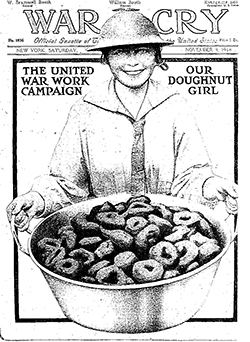“Snickets”
Who doesn’t love the occasional donut? There are some real artists out there making them at 4:00 in the morning. About the right time for me to swing by for a warm one on my way into the office. (bottom) The lovely Snicket. This one’s from Fragapane Bakery.
If you are like me, then you will understand how some days are just “made for a doughnut.” Too often (says my lovely wife), I’ll jump in the car and ride up to my neighborhood doughnut shop to get my favorite treat. Like Norm on the TV series Cheers, it’s a great feeling when you walk in and they already know your name and what you’re ordering. Give me a snicket and they let me to pick out that very, very, special one! After that, I’m good for pretty much whatever comes my way that day. Think “PIA” Jobs! Preparing for my post this week, I realized that today is national Doughnut Day, and this weekend is often celebrated as National Doughnut Weekend. Here’s some trivia to help you be the smartest connoisseur at the breakfast counter. Enjoy, and thanks Wikipedia and madehow.com.
- National Doughnut Day started in 1938 as a fund raiser for Chicago’s The Salvation Army. Their goal was to help those in need during the Great Depression, and to honor The Salvation Army “Lassies” of World War I, who served doughnuts to soldiers.
- The holiday celebrates the doughnut (a.k.a. donut) – an edible, torus-shaped piece of dough which is deep-fried and sweetened.
- The doughnut supposedly came to us from the eighteenth century Dutch of New Amsterdam and were referred to as olykoeks, meaning oily cakes. In the nineteenth century, Elizabeth Gregory fried flavored dough with walnuts for her son Hanson Gregory, hence the name doughnut. By the late nineteenth century, the doughnut had a hole.
- Soon after the US entrance into World War I in 1917, The Salvation Army sent a fact-finding mission to France. The mission concluded that the needs of US enlisted men could be met by canteens/social centers termed “huts” that could serve baked goods, provide writing supplies and stamps, and provide a clothes-mending service. Typically, six staff members per hut would include four female volunteers who could “mother” the boys. These huts were established by The Salvation Army in the United States near army training centers.
- About 250 Salvation Army volunteers went to France. Because of the difficulties of providing freshly baked goods from huts established in abandoned buildings near to the front lines, the two Salvation Army volunteers (Ensign Margaret Sheldon and Adjutant Helen Purviance) came up with the idea of providing doughnuts. These are reported to have been an “instant hit”, and “soon many soldiers were visiting The Salvation Army huts”. Margaret Sheldon wrote of one busy day: “Today I made 22 pies, 300 doughnuts, 700 cups of coffee.”
- Soon, the women who did this work became known by the servicemen as “Doughnut Girls” and the soldiers earned the nickname “doughboys”.
- In the Second World War, Red Cross Volunteers also distributed doughnuts, and it became routine to refer to the Red Cross girls as Doughnut Dollies as well.
- There are three other doughnut holidays, the origins of which are obscure. International Jelly-Filled Doughnut Day is June 8, National Cream-Filled Doughnut Day is Sept. 14, and Buy a Doughnut Day occurs on October 30.
- The birthday of the United States Marine Corps was once referred to as National Donut Day, in a successful ruse by American prisoners of war at Son Tay prison camp to trick the North Vietnamese into giving out donuts in honor of the occasion.
- More than 10 billion donuts are made every year in the U.S.
- Per capita, Canadians eat the most doughnuts compared to all world countries.
- Doughnuts vary depending on whether you use yeast or chemically leavened ingredients. Homemade doughnuts generally include far few ingredients than mass- produced or those made from mixes. Chemically-raised doughnuts are made with ingredients such as flour, baking powder, salt, liquid, and varying amounts of eggs, milk, sugar, shortening and other flavorings using baking powder in the batter to leaven the dough. Yeast-leavened doughnuts are made with ingredients that include flour, shortening, milk, sugar, salt, water, yeast, eggs or egg whites, and flavorings.
- And I’m sure you’re wondering, after snickets, my top three doughnuts are peanut, blueberry glazed and Boston cream.
(email me your top 3 doughnut choices, and I’ll send you a collector KHT coffee mug)
Doughnut Dollies 1918 France.
.
.
.




